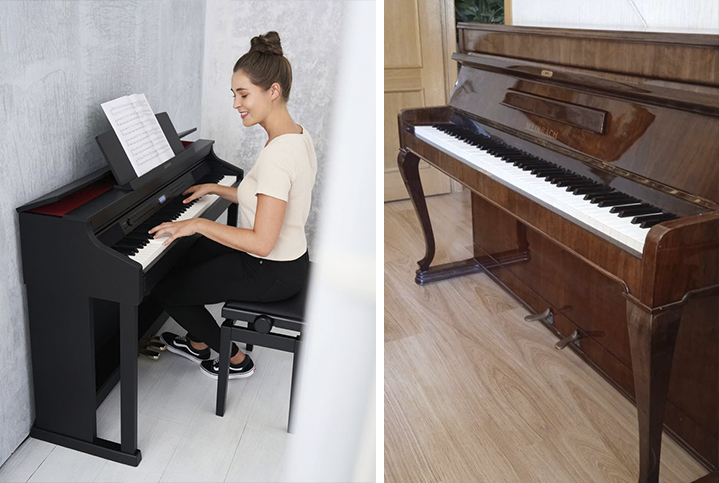
Learning to play the piano isn’t an easy task. It takes a great deal of practice, which requires the right instrument to put in that time. There are a couple of different options to pick from in this area, which may have some piano players comparing a digital piano vs acoustic piano when deciding which one to bring into their home.
Both of these options will help you learn the skills you need to play the piano but several differences between them may have you comparing one option to the other. They vary in sound, maintenance, price, and design, all of which will likely affect your decision when choosing one. Even more experienced players may prefer one over the other or use both options, depending on the space they have available and their financial situation. If you’re wondering which the right one for you is, check out our detailed comparison guide for more information.
The acoustic piano Trusted Source The origins of the Piano:The Story of the Piano's Invention - Musical Instrument Guide - Yamaha Corporation This is the Yamaha Corporation [Musical Instrument Guide] website. This article contains information about the Piano. www.yamaha.com that we use today was first invented by Bartolomeo Cristofori in about 1700. He was unhappy that musicians couldn’t control the level of volume in the harpsichord, which is why he replaced the plucking mechanism in earlier models with the hammer used today. Let’s take a look at what current acoustic pianos have to offer.
The mechanism for the piano is relatively simple, though it allows a pianist to alter the volume of the notes they’re playing. The keys on the piano are connected to hammers, which hits the strings as the keys are pressed, causing vibrations that create sound. The harder the keys are pressed, the harder the hammer hits the string, and the louder the sound will be.
There are two main types of acoustic pianos to choose from. Though they create the same type of sound using similar mechanisms, there are some differences worth noting.
The grand piano has a classic design with some modern upgrades that make it a favorite among professional musicians.
They are most often seen in concert halls and other professional settings, though these models do come with a higher price tag than the alternative piano design.
Grand pianos have a long horizontal body, with the strings extended inside of it. Gravity controls the way the keys and strings interact, resetting them every time you release a key to resume their resting position. Those longer strings also add a richer tone to the piano, with a lower inharmonicity for a more accurate pitch.
There are also baby grand pianos, which are shorter than 5’2” in length than the normal grand pianos. The slightly smaller body of these pianos also comes with a lower price tag and takes up less space without losing those rich tones that a grand piano is known for.
Upright pianos are much smaller, with higher backs and shorter lengths, making them a better choice for homes and apartments that may not be able to fit a large grand piano. They are also somewhat cheaper, making them a better choice for those on a budget.
Due to their smaller size, the strings in an upright piano run vertically, with a spring mechanism that resets the keys after you release them. These strings are shorter than those in grand pianos as well, which increases inharmonicity and makes the octaves sound slightly out of tune. Of course, a well-made model can still sound exceptional, provided the craftsmanship and materials used to build it are high-quality.
Digital pianos were designed to replicate the sound produced by an acoustic piano but in a much cheaper and more compact instrument. There are a variety of options to choose from, including the best beginner keyboards for adults or the best digital pianos for advanced pianists, so you can choose the right one to match your skill level. There are a few types to choose from as well, so you can get the perfect model to meet your quality and cost preferences.
Digital pianos have keys similar to those on an acoustic piano, though the mechanism used to create the sound is completely different. When you press a key on a digital piano, it activates speakers, which emit a recording of an acoustic piano note that is played through the speakers on the instrument.
There are no strings or hammers involved in this process, though the mechanical keys of the digital models mimic the action.
Like acoustic pianos, there are a few options to choose from, one of which is the grand piano. These digital pianos are high-quality, producing amazing sound and offering more realistic key movements. They also have the aesthetic appeal of the acoustic grand piano, though on a much smaller scale. The downside to these pianos is that they are more expensive than the other digital options, plus there isn’t as large a selection since they are only made by a few manufacturers.
There is also an upright digital piano version, which looks similar to the acoustic version. These are closer in size to the real upright piano models, though they weigh significantly less, so are easier to move around whenever needed. They are also much cheaper than the acoustic versions.
Even professionals can benefit from these models since some of the best digital pianos for classical pianists offer amazing quality in both the build of the instrument and the sounds it produces. The Yamaha Arius YDP-164 is a great option for those looking for a digital upright piano, due to its classic look and rich sound, as well as the built-in song memory and song recorder.
The portable digital piano is the smallest and lightest of the three, making it a much easier option for those who take their music on the road. Rather than the attached legs of the other models, these can be used on a stand, placed on a counter or table, or even used on the floor. These are cheaper as well, partly due to the smaller size, but also because they include more plastic parts than the other two digital options.
Despite the more compact size, many of the portable digital pianos have a variety of amazing features.
If you’re going to choose between a digital vs acoustic piano, it’s best to look at what features these two options have to offer and how they differ. This will help you decide which one is right for you, depending on your skill level, budget, and sound preferences.
| Digital | Acoustic | |
| Tuning | Not required | 1-2 times a year |
| Piano sound | Sample | Authentic |
| Touch sensitivity | Depends on model (weighted, semi-weighted) | Hammer action |
| Pedals | Should be bought separately in most models | 3 pedals, including sustain |
| Portability | Lightweight | Requires 2-3 people to move |
| Space requirements | Can be placed on tables and other furniture | Should have dedicated place |
| Price | Cheaper option | Expensive |
The keys on a piano, whether you’re using an acoustic or a digital model, are extremely important since these are what you use to create the sound when you’re playing. There are some differences worth noting when comparing a digital vs a real piano, though, so let’s take a look at what each of these has to offer.
With a few exceptions, acoustic pianos have 88 keys, ranging from A to C notes. The 52 white keys are made of spruce or basswood. Though they used to include an ivory layer over top, this has been replaced with plastic in modern pianos to meet the ban on elephant ivory after these animals were put on the endangered species list in 1975. The 36 black keys are also made of wood, though they use ebony or another type of hardwood with a black stain to give them the right coloring.
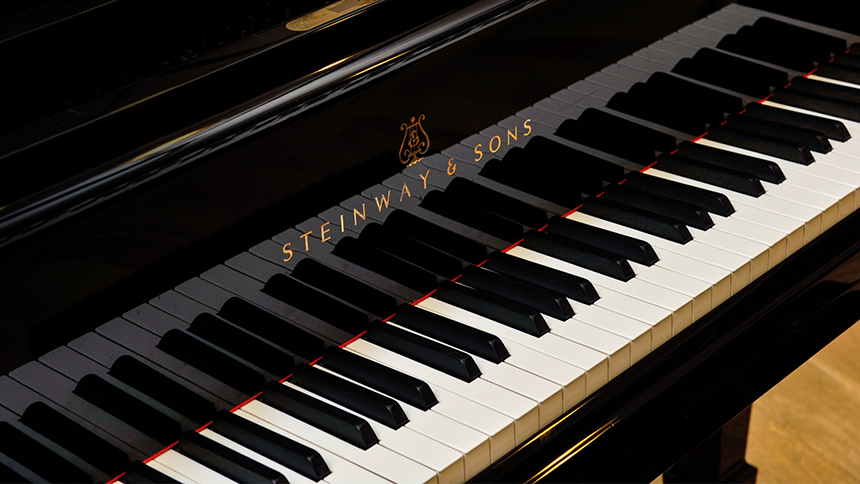
Most of the digital pianos on the market also include 88 keys, though there are some stage pianos and other models that vary the number. Like acoustic pianos, these include wood keys with plastic coverings to increase durability, as well as give the keys a lustrous shine. Though these keys can make a sound even with the gentlest touch, many digital piano manufacturers add weighted keys to their models to give them a more realistic acoustic feel when you’re playing.
Touch sensitivity refers to how the keys respond when you’re pressing them as you play the piano. Let’s take a look at what both types of pianos offer in this area.
As we discussed above, the mechanism used to create sound with an acoustic piano involves pressing the keys to activate the hammers, which then hits the strings to create those sound vibrations. How soft or hard you hit those keys will determine the volume of the sound created due to the touch sensitivity of these pianos.
The keys on an acoustic piano are also weighted, which requires more strength when pressing them to create any sound at all. Their weight combined with the movement of your fingers over the keys can alter the sound, varying the tone as well as the volume. You can change these characteristics as needed to suit the type of music you’re playing.
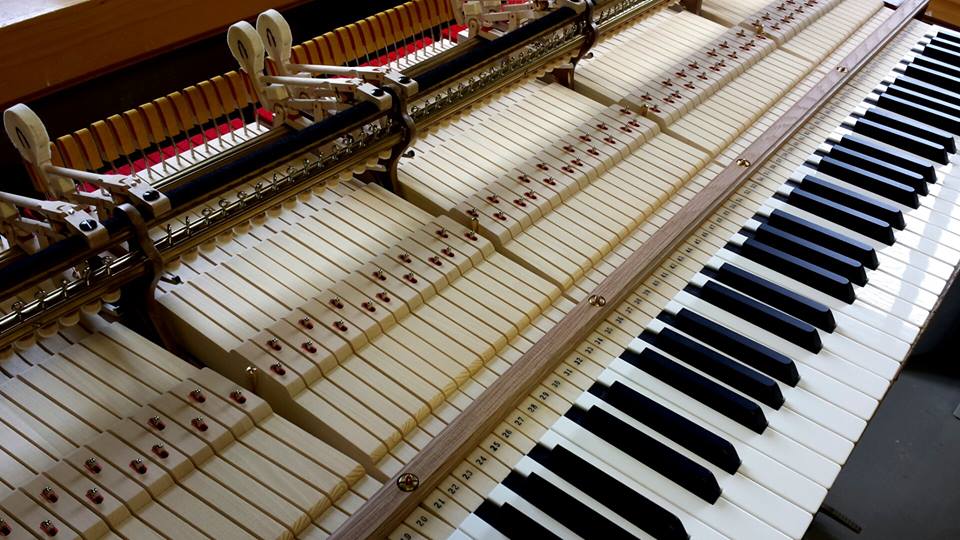
Digital pianos are somewhat limited when it comes to touch sensitivity. Unlike an acoustic piano, which can produce no sound when a key is pressed too lightly, a digital piano’s keys will produce a sound no matter how softly you touch the keys. This is because the sound being created is a digital recording of an acoustic piano rather than one produced by the digital instrument itself.
The tone of these pianos can still be altered by the strength and movement of your fingers on the keys, though, so they do still have some touch sensitivity. This allows you to create a variety of different shades of sound on each key, altering the tone as needed, depending on what you play.
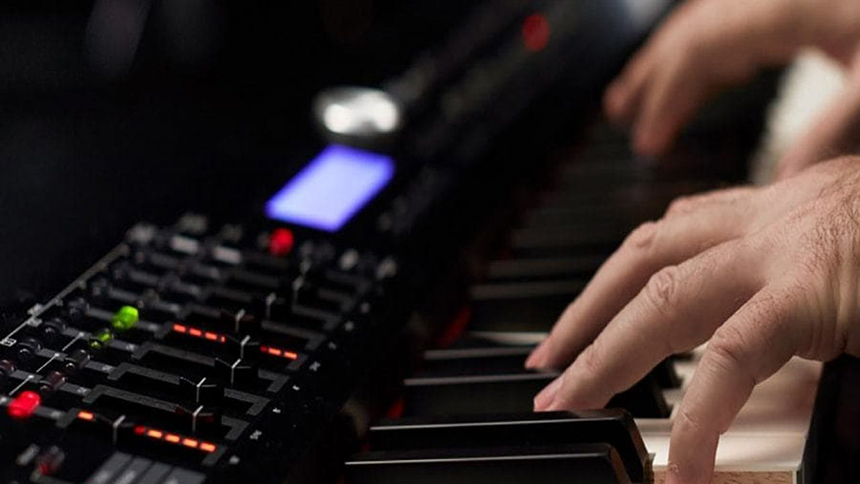
The sound of an instrument is one of the most important features when choosing which one to purchase and pianos are no exception. Though the sounds created by acoustic and digital pianos are similar, there is a noticeable difference worth considering before you bring one home.
Acoustic pianos are known for their distinctive sound that is created when the keys are pressed, sending the hammer up and into the strings. This creates its authentic sound with amazing warmth and resonance. Acoustic models also allow you much more control over articulation when you’re playing, letting you express yourself in a variety of ways through your music. The better quality the piano is, the better the sound quality will be.
Digital pianos use digital recordings to create sound, which loses some of the nuances of the instrument being recorded when you play your digital instrument. This is because the sound comes from a file rather than creating the sound itself. Though some think that this lack of nuance makes these machines inferior to the acoustic models, a high-end digital piano can still out-perform a low-end acoustic in many situations.
There are a few designs to choose from when picking a new piano, so considering what each type has to offer in this area will help you pick the perfect model to suit your taste as well as your needs.
Acoustic pianos have a classic look that stands out in any room. The grand piano has a refined air to it that brings a touch of class to luxury homes, hotels, or high-end restaurants. Even the upright models have a traditional appeal that brings to mind country homes or western movies.
Regardless of which one you choose, the design of the acoustic piano ensures long-lasting quality and durability. The vibrations from the strings as you play resonate well in their wooden bodies, filling even the largest rooms with their pleasing tones.
Of course, with only two real options to choose from, the design of the acoustic is still a bit limiting. They have almost the same shape and look, no matter what brand you purchase. Aside from picking black, white, or brown, there is no real unique appeal to these models, so beginners likely won’t be able to tell one brand from another.
Digital pianos have a wide variety of designs to choose from, giving you a wide variety of options to pick from. As well as the choice between grand, upright, and portable designs, there are also different control options to pick from. You can get a simple model designed to strictly play piano or you can get one with an array of controls to produce other instrument sounds, from drums to saxophones to actual voices. This allows you to create an entire piece with a single instrument.
These pianos also include volume controls, so you can raise or lower them as you see fit. Some of them even add a headphone jack to avoid interrupting those around you with your music or to keep new compositions to yourself until they’re ready to be shared. Some digital pianos even allow you to connect to a computer to record your music.
The pedals on a piano serve specific purposes, though they aren’t included with every model that you buy. Let’s take a look at the acoustic piano vs the digital piano when it comes to the pedals.
There are three pedals on an acoustic piano, which positioned from left to right are the soft, sostenuto, and sustain pedals. The soft pedal, also called una corda pedal, changes how the mechanism in the piano works. When playing an acoustic piano, the strings are in groups of threes, with each of these groupings tuned to a single note. When playing the piano, the hammer strikes all three of those strings, creating a full, bright sound. If you press the soft pedal when you play, this mechanism moves to the right and the hammer only hits two of the strings. This creates a softer, muted note.
The sostenuto pedal in the middle holds the notes that are played when the pedal is pressed down, though it doesn’t alter those that you’ve played before stepping on it. This pedal is the newest addition to an acoustic piano, having been added to most models in the late 20th century.
The sustain pedal removes the dampers from the strings, which would normally halt the note after you release the key. This allows the note to carry on, even when you’re no longer pressing any of the keys. It is similar to the sostenuto pedal, except that it removes the damper on notes you’ve played before pressing the sustain pedal as well as those played after.
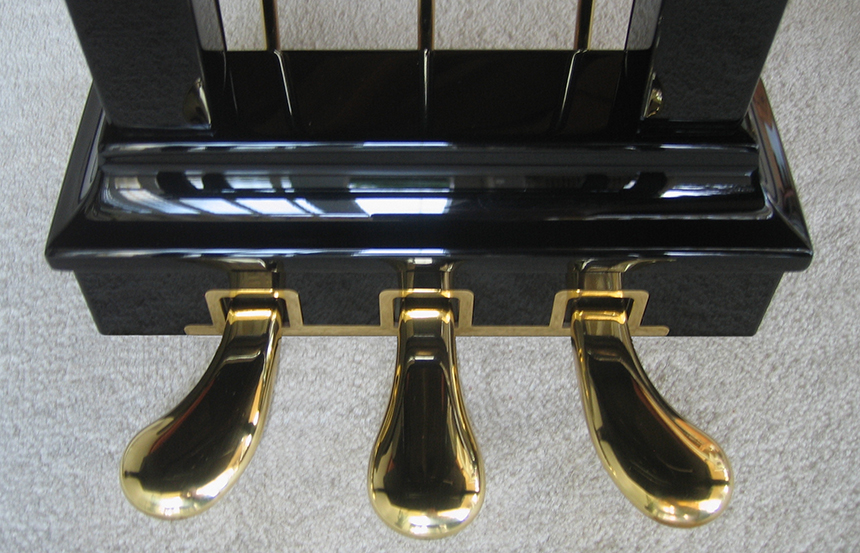
Digital pianos don’t have the same pedals as an acoustic model. In fact, many models don’t include any pedals at all, most notably the portable pianos since many of them don’t even include any type of stand unless you purchase one separately. The ones that do include a pedal usually only come with a sustain pedal and the ones that don’t often have the option of purchasing one separately if you think you need one. The other two pedals are rarely included as any type of add-on with a digital piano, though since these two are rarely used anyway, you may not even need them.
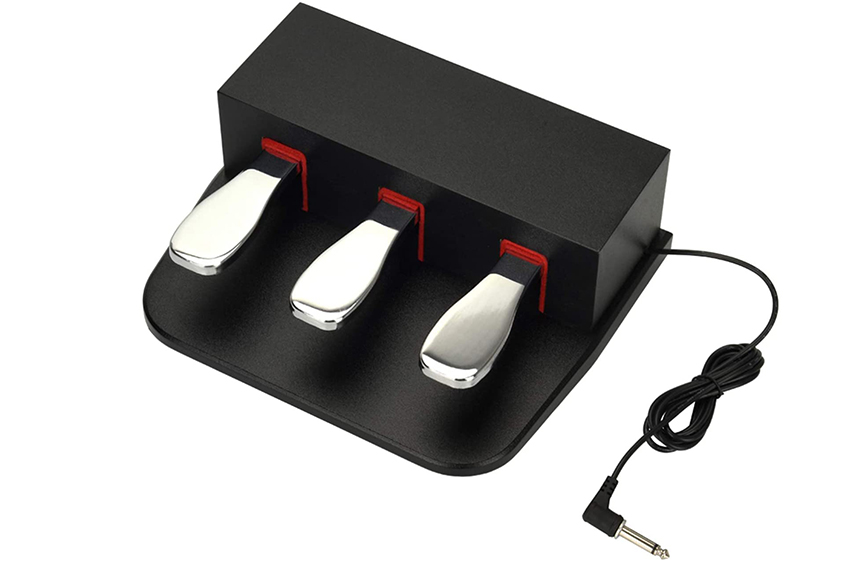
Maintenance is important for any of your instruments to ensure that they are performing as they are supposed to. It also ensures that they last as long as possible so you don’t need to constantly replace them, which is essential for such expensive pieces. Acoustic and digital modes don’t require the same type of maintenance, though, so consider what this entails when choosing one of these models.
Those flowing, resonant tones of an acoustic piano don’t happen by accident. They are the result of the perfect combination of keys, hammers, and strings. To keep those pieces working so well together, you need to make sure that the piano is kept in tune.
The main part that needs attention is the strings, much like those on a guitar or violin, though this task is somewhat more difficult than it is on those smaller instruments. A professional tuner is trained to maintain those strings to ensure that they are hitting the right pitch when you press the keys. Tuning should be done by a professional once or twice a year for the best-sounding piano.
Another maintenance issue that may need attention has to do with the wood that makes up the body of the piano as well as the internal components. The more the temperature and humidity fluctuate, the more the piano’s components could be affected. The higher the moisture level, the more often your piano will need attention.
Keeping the humidity level in your home between 45% and 70% with a temperature of about 68 degrees Fahrenheit will reduce how often your piano will need to be maintained.
As long as you care for your digital piano by protecting it from bumps or falls, it shouldn’t require any real maintenance to ensure it always sounds the way it’s supposed to. There could be a few issues that occur over time, such as stiff keys or knobs, though these can be remedied quickly by contacting the manufacturer. There are no strings, hammers, or other components that need to be adjusted, so it won’t require any regular maintenance unless you mistreat the piano.
There are a few reasons to consider the price when comparing electric piano vs piano models. One has to do with how much you can afford to spend on a new piano since there is quite a large discrepancy between some models. Cheaper ones may also not have all of the features or quality that you may be looking for, so keep this in mind when deciding between an acoustic and a digital model.
Acoustic pianos are pricy, even when you’re choosing the more compact upright models. These average at about $3000 to $6500, though if you’re interested in a more high-end model, you can spend up to $25,000. These pricier pieces are most likely out of most people’s budget, though, which is why the more cost-efficient models are more popular.
The entry-level grand pianos are more expensive at between $7000 and $30,000, which puts some of them at a higher price point than even the most costly uprights. Those looking for a Steinway, Yamaha, or another high-end grand piano could pay between $65,000 and $190,000. So, even those with the space for one of these acoustic models may not be able to afford one.
As well as the cost of the piano, you also need to consider the cost of the maintenance required to keep it in tune.
Even if your piano only needs tuning once or twice a year, it is still an extra expense that you should factor in when deciding on a new piano.
Digital pianos are much more budget-friendly than acoustic models. This is mainly due to the compact sizes of these pianos, plus they contain cheaper components, such as plastic bodies and keys. A simple portable digital piano can cost only a couple hundred dollars, while the expensive ones can run about $3000 to $4000.
Even if you add stands, pedals, amps, and other extras to the mix, you’ll still be spending only a fraction of the cost of an upright. Keep in mind that the cheaper ones may not have all the features or the sound quality of more expensive options, though they are still a great option for beginners.
Though the features that we described above are all important factors to consider when picking a new piano, there are also a few other considerations that may affect your choice.
One of the first things to consider when deciding which piano to buy is your level of proficiency. For beginners, a high-end piano may not be the best choice since they may not learn the skills they need to take their playing to the next level or they may lose interest, leaving the piano to collect dust from lack of playing. There are a variety of digital options that are cheap enough to help you learn how to play. Once your skills improve, you can consider a more expensive digital or acoustic option if you think it will get the use needed to make it worth the higher cost.
The genre of music that you plan to play will also determine which type of piano you should buy. Classical music is best played on an acoustic piano, thanks to the touch sensitivity that these pianos are known for. These also offer more subtle dynamics and expression, which is a must for classical pieces.
If you prefer to play rock, pop, or funk music, a digital piano may be a better choice. Not only do digital models sound similar to acoustic models, but they also feature an array of other controls, like drum beats and other instrument sounds. These can be added to your music to give it more definition, allowing you to create or play an entire song with one instrument.
Your practice schedule is another important factor to consider when picking a new piano. If you like to practice during the day, an acoustic piano is fine to help build your skills.
Those practicing in the evening or night will need to be a bit more considerate, so a digital piano with volume knobs and a headphone jack may be in order. One of these will prevent you from disturbing those trying to sleep while you play.
If you plan to perform your music for others, you need to consider the availability of a decent piano where you plan to play. If there is none available at the venue, then you’ll need to provide your own, which you can’t do with a cumbersome acoustic piano. A portable digital model is a great alternative for live performances.
Where you’re going to play affects your piano decision since not everyone has the same amount of space in their home. Small apartments likely won’t fit an acoustic grand piano and even a smaller upright may be too large, depending on the size of the space and whatever else you have to fit in. A digital piano is a better option for those with limited space. Large homes have much more space available, so they likely have the room needed for any type of piano that you like.
If you’re still having trouble choosing between an acoustic and a digital piano, there is one more option to consider. This is the hybrid piano, which combines the best of both options.
Hybrids are relatively new to the piano world, combining the action mechanism of an acoustic model with the digital sounds that a digital piano is capable of. You can go back and forth between them, using those warm tones for some of your music and then switching to digital mode to get the features that these pianos are known for. The Casio GP510 is a good option, thanks to its Acoustic Simulator technology that offers three grand piano sounds, full-length, weighted, wooden concert keys, and some amazing effects and controls.
The downside of a hybrid piano is that these are rather expensive, costing more than many of the acoustic models available. This high price point places these pianos out of reach for those on a budget. There is also some debate on the sound quality since the action mechanism of the acoustic models doesn’t necessarily give you the authentic tones of a real piano, likely due to the addition of the digital components.
A piano has a distinctive sound that no other musical instrument can compare with, with warm tones that resonate throughout any space. The issue with this instrument is that there are a few different options to choose from, making it tricky for some people to figure out which is the right one for them.
When choosing between a digital piano and an acoustic, you should consider specific factors. For instance, if you’re just starting to learn to play, shopping on a budget, have limited space, or plan to travel with your piano, a digital option may be the best choice.
Anyone with a larger budget, who likes to play classical music, prefers the nuances of the touch-sensitive keys, or has the skill to put a more traditional model to good use may want to stick with an acoustic piano.